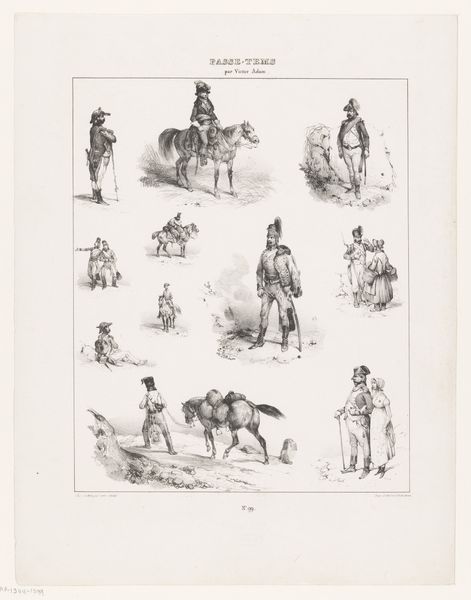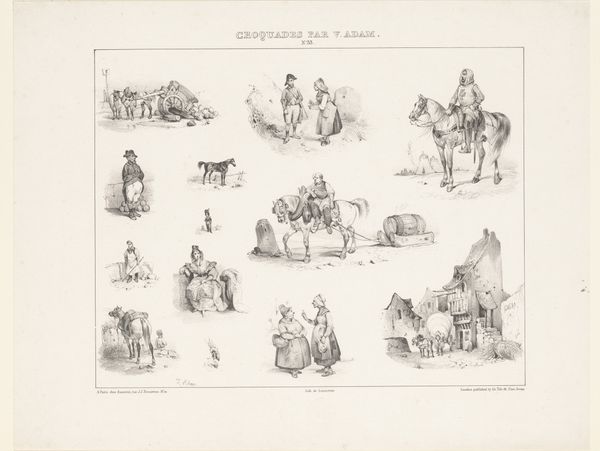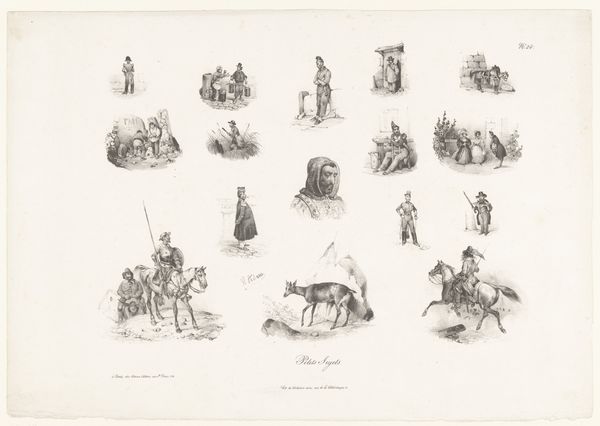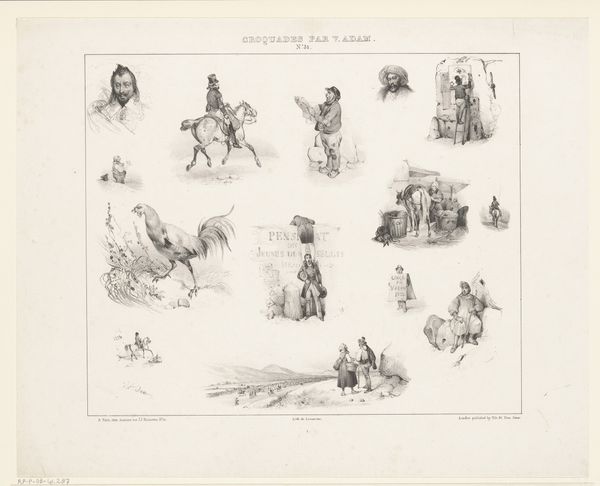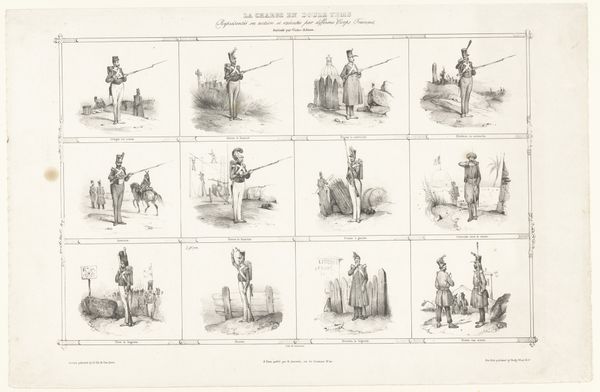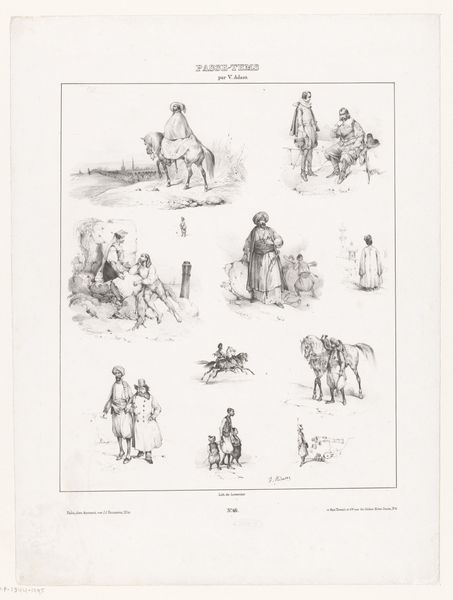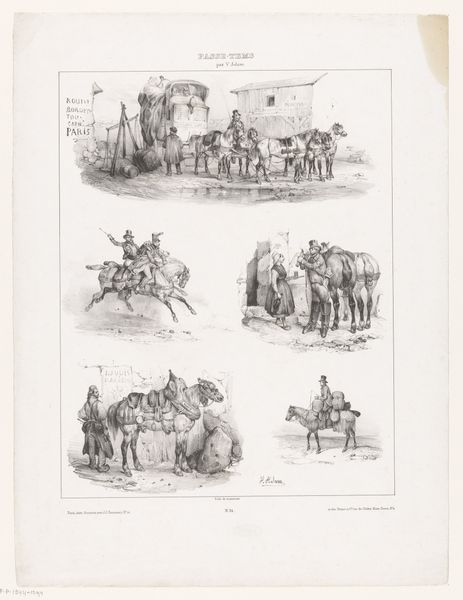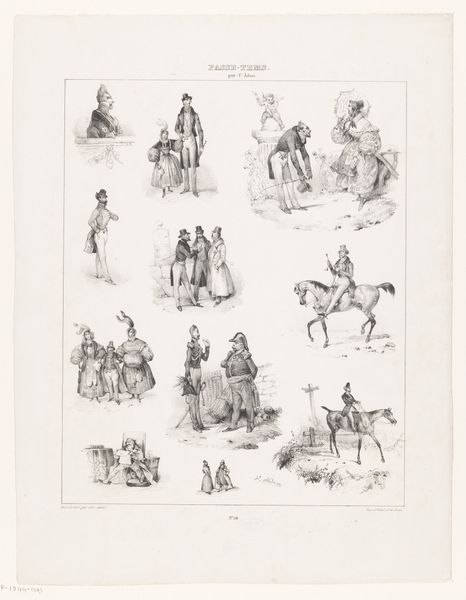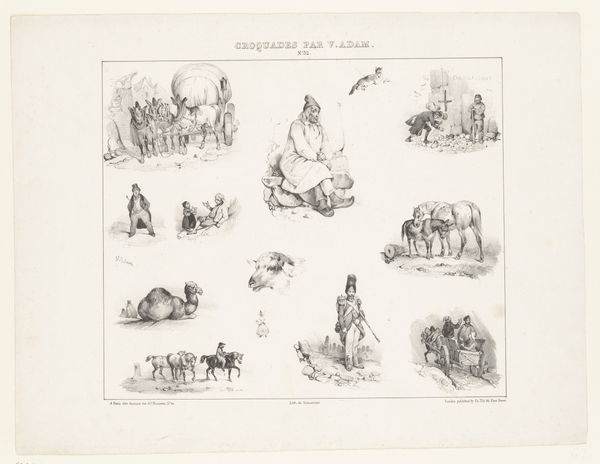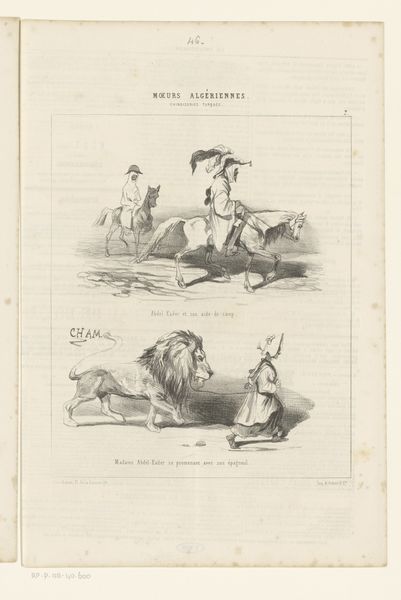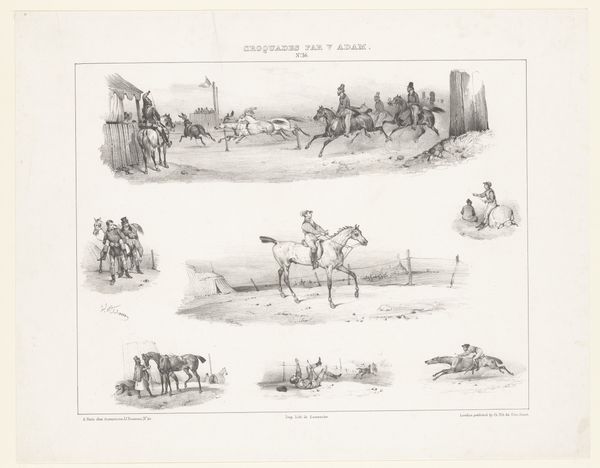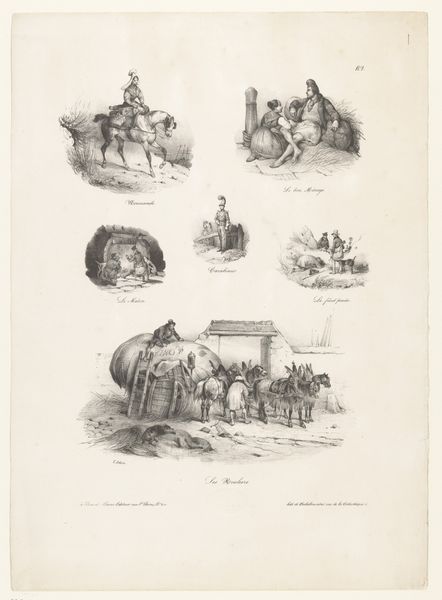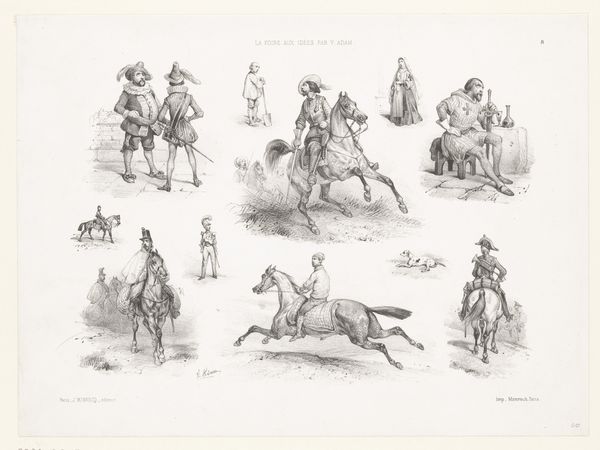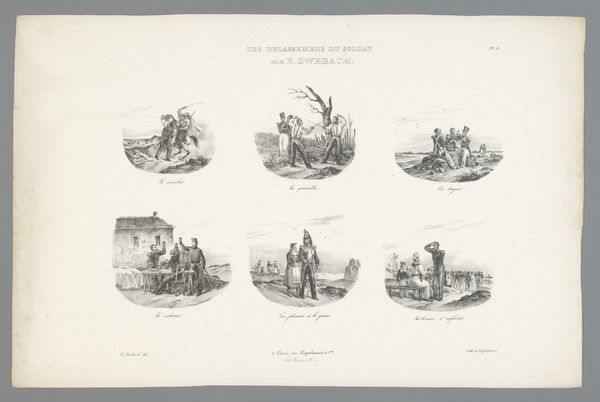
Vijftien voorstellingen uit het dagelijks leven met diverse menselijke figuren 1833
0:00
0:00
drawing, lithograph, print
#
portrait
#
drawing
#
narrative-art
#
lithograph
# print
#
figuration
#
romanticism
#
genre-painting
Dimensions: height 263 mm, width 339 mm
Copyright: Rijks Museum: Open Domain
Editor: We're looking at "Vijftien voorstellingen uit het dagelijks leven met diverse menselijke figuren," a lithograph by Victor Adam from 1833. It feels almost like a sheet of studies, various little scenes and figures scattered across the page. What do you see in this collection of images? Curator: What strikes me immediately is the romantic lens through which Adam observes everyday life. Notice the emphasis on individuality amidst the burgeoning industrial era. Each vignette, seemingly disconnected, hints at the social strata and evolving cultural identities within 19th-century Europe. The military figures, for instance – what role do you think they play in the broader narrative? Editor: They’re quite prominent, aren’t they? There are quite a few soldiers here! Perhaps suggesting the looming presence of state power or even anxieties about conflict in daily life? Curator: Precisely! And consider the other figures: the street performers, the fashionable ladies, the children. Are these representations objective, or are they subtly infused with the artist's social commentary? To what extent is he constructing a narrative about his time, and for whom? The fact that these images would be printed and disseminated suggests a public eager to consume images of themselves and their society. Editor: So it’s not just a collection of random sketches, but almost a constructed image of society itself, designed for a specific audience? The figures almost act like characters. Curator: Indeed. The romantic spirit often involved a negotiation with reality, carefully curated for consumption. Consider the role lithography plays. It's a medium capable of mass production, making these images accessible. This begs the question: how does accessibility influence the perception and politics of art? Editor: That really reframes the whole artwork. I was looking at it as just snapshots of life, but it’s more of a social statement that many people would have seen and probably thought about. Thanks! Curator: Exactly. Thinking about the audience and distribution completely changes how we understand this seemingly simple image. Thanks for these interesting remarks.
Comments
No comments
Be the first to comment and join the conversation on the ultimate creative platform.
